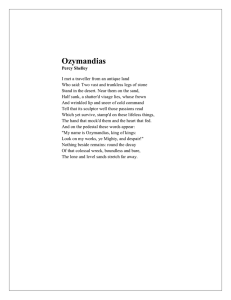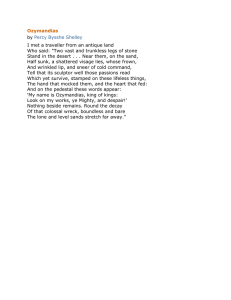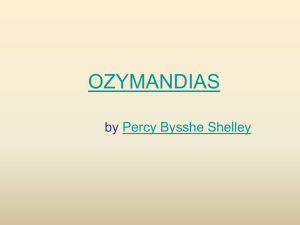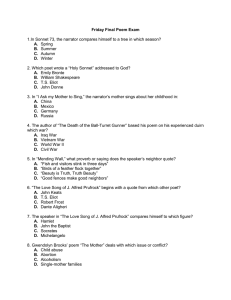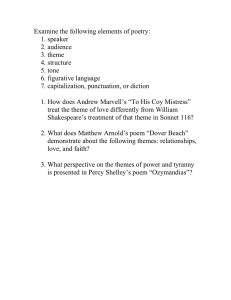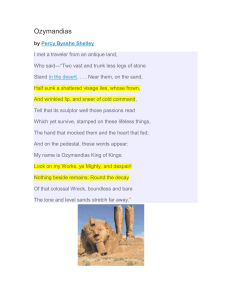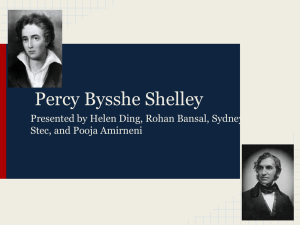2202234 Introduction to the Study of English Literature Semester I, 2010
advertisement
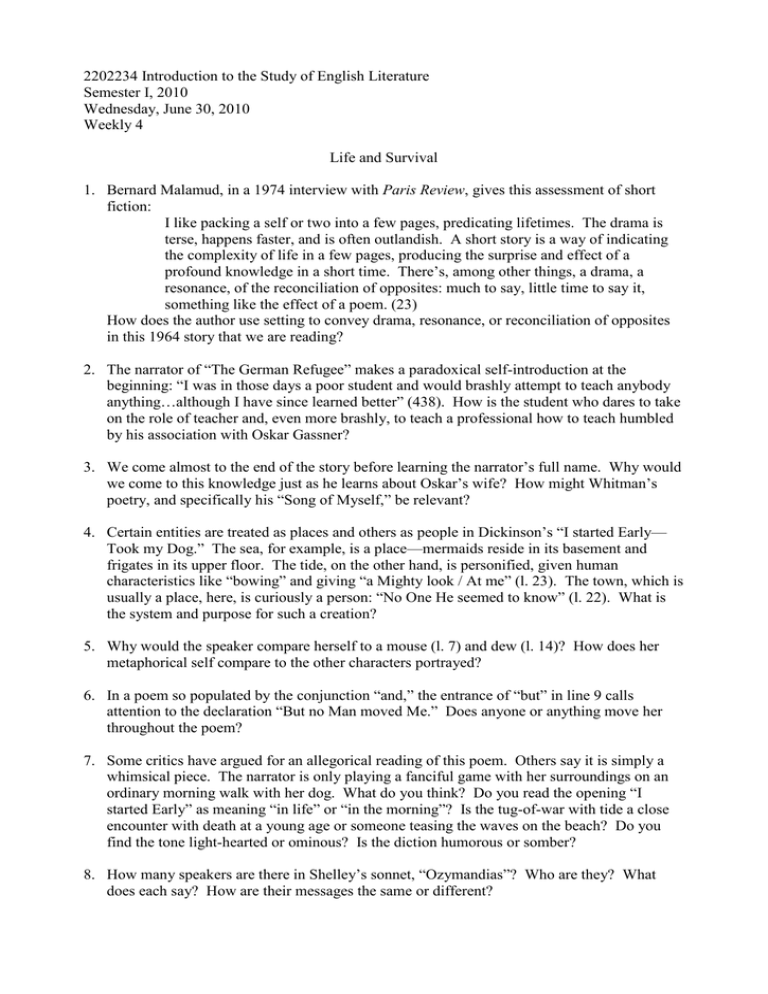
2202234 Introduction to the Study of English Literature Semester I, 2010 Wednesday, June 30, 2010 Weekly 4 Life and Survival 1. Bernard Malamud, in a 1974 interview with Paris Review, gives this assessment of short fiction: I like packing a self or two into a few pages, predicating lifetimes. The drama is terse, happens faster, and is often outlandish. A short story is a way of indicating the complexity of life in a few pages, producing the surprise and effect of a profound knowledge in a short time. There’s, among other things, a drama, a resonance, of the reconciliation of opposites: much to say, little time to say it, something like the effect of a poem. (23) How does the author use setting to convey drama, resonance, or reconciliation of opposites in this 1964 story that we are reading? 2. The narrator of “The German Refugee” makes a paradoxical self-introduction at the beginning: “I was in those days a poor student and would brashly attempt to teach anybody anything…although I have since learned better” (438). How is the student who dares to take on the role of teacher and, even more brashly, to teach a professional how to teach humbled by his association with Oskar Gassner? 3. We come almost to the end of the story before learning the narrator’s full name. Why would we come to this knowledge just as he learns about Oskar’s wife? How might Whitman’s poetry, and specifically his “Song of Myself,” be relevant? 4. Certain entities are treated as places and others as people in Dickinson’s “I started Early— Took my Dog.” The sea, for example, is a place—mermaids reside in its basement and frigates in its upper floor. The tide, on the other hand, is personified, given human characteristics like “bowing” and giving “a Mighty look / At me” (l. 23). The town, which is usually a place, here, is curiously a person: “No One He seemed to know” (l. 22). What is the system and purpose for such a creation? 5. Why would the speaker compare herself to a mouse (l. 7) and dew (l. 14)? How does her metaphorical self compare to the other characters portrayed? 6. In a poem so populated by the conjunction “and,” the entrance of “but” in line 9 calls attention to the declaration “But no Man moved Me.” Does anyone or anything move her throughout the poem? 7. Some critics have argued for an allegorical reading of this poem. Others say it is simply a whimsical piece. The narrator is only playing a fanciful game with her surroundings on an ordinary morning walk with her dog. What do you think? Do you read the opening “I started Early” as meaning “in life” or “in the morning”? Is the tug-of-war with tide a close encounter with death at a young age or someone teasing the waves on the beach? Do you find the tone light-hearted or ominous? Is the diction humorous or somber? 8. How many speakers are there in Shelley’s sonnet, “Ozymandias”? Who are they? What does each say? How are their messages the same or different? 9. Part of the words engraved on the pedestal reads: “Look on my Works, ye Mighty, and despair!” (l. 11). What are the works of Ozymandias? What remnants of his achievements remain? 10. The phrase “colossal Wreck” juxtaposes a sense of grandness with that of ruin (l. 15), making the combined result almost an oxymoron: if something is destroyed, how can it be magnificent? Examine some other juxtapositions. These might be contrastive words or ideas set close to each other like “survive” and “lifeless” (l. 7), or images like “vast and trunkless” or “trunkless legs” and “standing” (l. 2,3), or scales of things like “colossal” and “boundless” (l. 15). What effect do these ironic pairs have on the development of the sonnet? 11. Shelley wrote “Ozymandias” in playful competition with his friend Horace Smith. Their sonnets seemed to be “responding independently to a conversation about the scene” and Shelley’s “may reflect recollection of a description and an illustration in Richard Pococke’s A Description of the East and Some Other Countries (London, 1743).”1 Today, I would like to challenge you to a 2202234 contest. In our classes, we have discussed many poems and literary devices. Look at the picture below and write a poem in response to it. You can invent your own form or use one that we’ve studied like the sonnet, ballad, free verse, or even experiment with a form you learned about from one of your forays into literary references like the limerick or villanelle. Happy composing! Winning Hearts and Minds An Afghan villager and his daughters greet a U.S. Marine with tea on March 23 in Kirta, in remote southwest Afghanistan. The Marines have been cultivating relationships with local farmers to get information on potential Taliban attacks.2 Donald H. Reiman and Sharon B Powers, eds., Shelley’s Poetry and Prose: Authoritative Texts, Criticism (New York: W. W. Norton, 1977) 103. 2 2009 Photos of the Year, Life, 30 June 2010 <http://www.life.com/image/85562360/in-gallery/37802/2009photos-of-the-year>. 1
